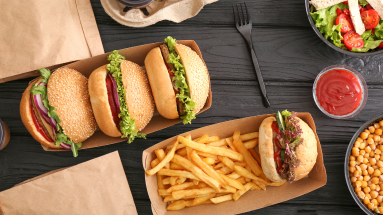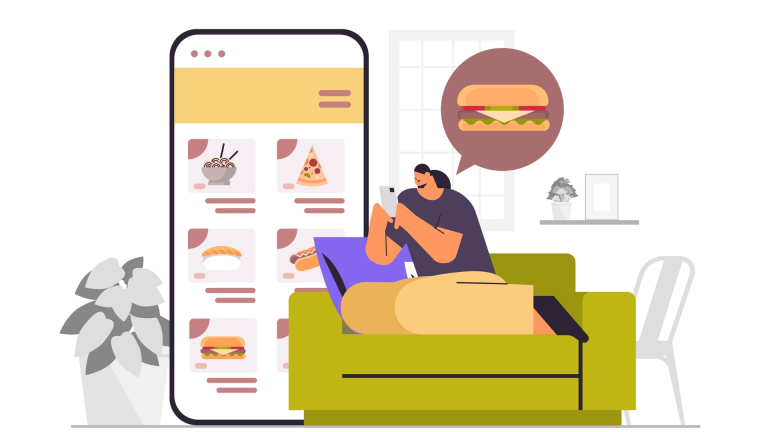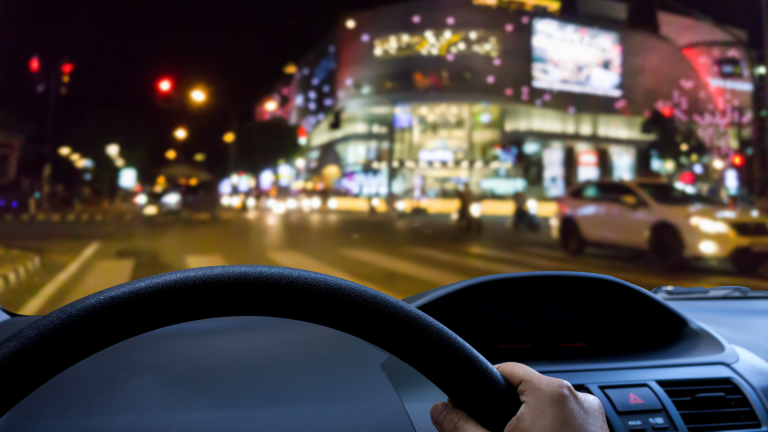If you’re looking to take your restaurant business to the next level, you need to focus on maximizing sales. It can be done in several ways, but it all starts with a solid strategy. This guide will discuss some essential tips for boosting your sales and bringing in more customers. By following these guidelines, you’ll be able to create a successful approach that yields results. So whether you’re just getting started or want to fine-tune your current strategy, keep reading the ultimate guide to maximizing your restaurant sales results.
Sales vs. Marketing
There are two universal approaches to promoting a restaurant:
Sales involve actively trying to sell the restaurant’s products or services to potential customers. This can be accomplished through things like special offers or discounts.
Its counterpart in marketing is about creating an appealing image for the restaurant that will attract customers. This can be done through advertising, public relations, and social media.
Both sales and marketing are important for restaurants, but which one is more important?
It really depends on the situation. If a restaurant is new and relatively unknown, then marketing is essential in order to build up a customer base. However, once a restaurant is established, sales become more important in order to keep customers coming back. In the end, both sales and marketing are necessary for restaurants to succeed.
What Are the Strategies Used in Restaurant Operations?
A solid marketing plan for how a business can market its products or services to its target market is an excellent place to start. A good marketing strategy will:
- Identify the target market
- Define the goals of the marketing campaign
- Outline the steps in the marketing process
Some common marketing strategies include:
- Public relations: Creating awareness of a product or service through press releases, media relations, or other activities.
- Event marketing: Generating leads and sales by attending or hosting events such as trade shows, webinars, or conferences.
- Direct marketing: Reaching potential customers directly through activities such as direct mail, email marketing, or telemarketing.
- Social media marketing: Creating awareness and generating leads through social media platforms such as Facebook, Twitter, or LinkedIn.
As you can see, the sales process and marketing process overlap in some areas but are ultimately two different things. Your restaurant will need to use both sales and marketing techniques in order to be successful.
Now that we’ve covered the basics, let’s take a look at some specific ways you can maximize your sales efforts as a restaurant owner or manager in 2022.
Leveraging a Digital Presence to Increase Restaurant Sales
An online presence can play a powerful role in boosting restaurant sales. By leveraging a few key digital marketing techniques, you can reach a wider audience, build customer loyalty, and increase your bottom line.
Creating a strong restaurant website
Your website is often the first point of contact between your restaurant and potential customers. Make sure your site makes a good impression by including high-quality photos, clear and concise descriptions of your menu items, and easy-to-use booking and ordering forms.
You can also use your website to upsell customers on additional items, such as desserts or drinks, by prominently featuring these items on the homepage or in the online ordering process.
Social media is a great way to connect with potential and current customers. Use platforms like Facebook and Instagram to post mouth-watering photos of your food, run promotional campaigns, increase brand awareness, and share new dishes or news about upcoming events at your restaurant for your target audience.
Interact with your followers regularly by responding to comments and messages. This will help to create a sense of community around your brand and build customer loyalty. This is beneficial for small businesses that do not have a loyal customer base.
Generating positive online reviews
Online reviews can have a big impact on a potential customer’s decision-making process. Encourage your happy customers to leave reviews on popular platforms like Google, Facebook, and Yelp.
Incentivize customers to leave reviews by offering a discount or freebie for their feedback.
Search Engine Optimization
Search Engine Optimization (SEO) refers to a range of techniques that organically improve the visibility of a website in search engine results pages (SERPs). Through SEO, you can ensure that your customers see your content before your competitors.
There are several factors that can affect a website’s ranking in SERPs, including the quality and quantity of its content, the relevance of its keywords, the authority of the website, and the strength of its backlink profile.
By optimizing your website for search engines, you can increase the likelihood that potential customers will find your restaurant online and increase the sales revenue for your restaurant.
Digital Advertising
Paid advertising is a great way to reach new customers and promote special offers or events at your restaurant. Through platforms like Google Ads and Facebook Ads, you can create ads:
- Showing footage behind the scene
- Close up on dishes
- Leads ads by offering a coupon in exchange for an email address
- Testimonials from customers and employees
- Event, seasonal, and exclusive menu
You can also use digital advertising to re-targeting customers who have visited your website but haven’t made a purchase. You can encourage them to return to your restaurant and complete a sale by showing them relevant ads.
Embrace Micro Influencing
Micro-influencers are social media users with a smaller but highly engaged following. These influencers can be highly effective in promoting your restaurant to their followers.
Unlike celebrities or big influencers, micro-influencers typically have greater credibility with their audience and can, therefore, generate more authentic engagement.
To find micro-influencers in your area, search for popular hashtags related to your restaurant on social media platforms like Instagram and Twitter. Then, look at the accounts that frequently use these hashtags and see if they have a large and engaged following. You can also use a tool like BuzzSumo to identify popular influencers in your industry.
Reach out to micro-influencers that you think would be a good fit for your brand and offer them freebies or discounts for promoting your restaurant to their followers.
Build a Mobile-friendly Website
In today’s digital world, it’s more important than ever to have a mobile-friendly website. A mobile-friendly website is one that can be easily accessed and used on a smartphone or tablet.
Mobile-friendliness is important because more and more people are using their mobile devices to access the internet. In fact, Google has announced that mobile-friendliness will be a ranking factor in its search engine results pages (SERPs). This means that if your website is not mobile-friendly, it is likely to rank lower in SERPs, and you will miss out on potential customers.
To make sure your website is mobile-friendly, you can run a Google Mobile-Friendly Test.
Improve Digital Presence with Listings Management
Listings management is claiming, verifying, and updating your business listings on directories like Google My Business, Yelp, and TripAdvisor. For example, if you search for a restaurant on Google, you’ll likely see a list of restaurants in your area with their addresses, phone numbers, and hours of operation.
If it does not list your restaurant on these directories, potential customers cannot find you online. And if your listings are inaccurate, potential customers may get frustrated and go to a competitor’s restaurant instead.
It’s important to claim and verify your listing in all relevant directories to ensure your restaurant is visible to potential customers. You should also regularly update your listings with accurate information, such as your hours of operation, address, and contact details.
By claiming and maintaining your listings, you can improve your restaurant’s digital presence and drive more customers to your business.
Cross-promotion is a marketing technique in which two businesses promote each other’s products or services to their respective audiences. For example, a restaurant could partner with a local grocery store and promote the store’s products on its menu. In exchange, the grocery store would promote the restaurant to its customers.
Cross-promotion can be an effective way to reach new customers and grow your business. When choosing a partner for cross-promotion, it’s important to select a business that is complementary to your own. For example, if you’re a restaurant, you might want to partner with a local grocery store, bakery, or catering company.
To get started with cross-promotion, reach out to businesses you think would be a good fit and offer to promote their products or services to your customers. In exchange, ask them to promote your business to their customers.
On Floor Strategies, to Maximize Restaurant Sales
Apart from using online presence and marketing strategies to increase restaurant sales, it is essential to focus on some key areas in the restaurant itself. You can encourage customers to spend more money when they visit your restaurant by making a few changes in these areas.
Embrace the power of restaurant upselling
Restaurant upselling is the practice of encouraging customers to purchase higher-priced items, upgrades, or add-ons. For example, a server might ask customers if they want to upgrade their order from a small drink to a large one.
Upselling can be an effective way to increase your restaurant’s sales because doing so allows you to make more money from each customer. If done correctly, upselling can also improve the customer experience by helping people get more value from their purchases.
To successfully upsell to customers, you need to train your staff on how to upsell in a way that is not forceful or pushy. Your staff should be able to make suggestions in a helpful, informative, and not intrusive way.
It is also important to offer products or services that are valuable to the customer. If you’re selling an upgrade that the customer doesn’t need or want, they’re likely to be turned off and less likely to revisit your restaurant.
Your restaurant menu is one of the most important tools to increase your restaurant’s sales. By carefully designing your menu, you can encourage customers to order higher-priced items and increase your overall profitability.
When designing your menu, there are a few key things to keep in mind.
- Make sure that your prices are clearly displayed. If customers have to ask how much something costs, they’re less likely to order it.
- Highlight your most popular and profitable items. You can do this by placing these items in prime real estate on your menu or using eye-catching images or graphics.
- Use descriptive language to make your dishes sound more appealing. For example, instead of listing a dish as “chicken with rice,” you could describe it as “succulent chicken with aromatic basmati rice.”
- Offer special deals and promotions on your menu. For example, you could offer a discount on a certain dish or include a coupon for a future purchase.
- Make sure that your menu is easy to read and understand. If it’s too complicated or confusing, customers will be less likely to order from it.
Start a loyalty program or reward system
Loyalty programs and rewards systems are another great way to increase your restaurant’s sales. These programs encourage customers to keep coming back to your restaurant by offering them rewards for their business.
There are a few different ways to set up a loyalty program. One option is to offer discounts or freebies after a certain number of visits. For example, you could give customers a free appetizer after their fifth visit.
Another option is to offer points for every purchase that can be redeemed for future discounts or freebies. For example, you could give a customer one point for every $10 they spend at your restaurant. Once they reach 100 points, they could redeem them for a $10 discount on their next purchase.
You can also offer a combination of points and visits, such as giving customers a free entree after their tenth visit or after they’ve accumulated 500 points.
Whatever system you choose, make sure it’s easy for customers to understand and use. The last thing you want is for customers to get frustrated and give up on your program.
Organize events and workshops
Organizing events and workshops is a great way to bring in new customers and increase your restaurant’s sales. You can host a variety of unique events, such as cooking classes, wine tastings, or farm-to-table dinners.
Not only will these events help you attract new customers, but they’ll also allow you to upsell them on your menu items. For example, if you host a wine tasting, you could offer customers the option to purchase a bottle of wine to enjoy their meal.
One of the best ways to increase your restaurant’s sales is to turn your existing customers into promoters. Promoters are customers who are so impressed with your restaurant that they tell their friends and family about it.
There are a few key things you can do to turn your customers into promoters.
- Provide them with an exceptional experience from start to finish. This includes everything from the minute they walk in the door to the minute they leave.
- Get to know your customers and make them feel like VIPs. Remember their names, favorite dishes, and any special occasions they’re celebrating.
- Go above and beyond to exceed their expectations. For example, if a customer is celebrating their birthday, bring them a complimentary dessert or give them a discount on their meal.
- Provide an incentive to your customers to bring in new customers. For example, you could give them a $10 gift card for every new customer they refer to your restaurant.
Maximize table turnover
Table turnover is the number of times a table is used in an evening.
The higher your table turnover, the more customers you can serve and the more money you can make. There are a few things you can do to increase your table turnover.
First, you can train your servers to be more efficient. This includes taking orders quickly, clearing plates in a timely manner, and making sure customers have everything they need.
Second, you can optimize your menu for quick service. This means offering items that can be prepared quickly and don’t require a lot of ingredients.
Third, you can offer a variety of seating options. This includes both indoor and outdoor seating, as well as high-top tables, booths, and bar seats.
Finally, you can offer a loyalty program to customers who dine during off-peak hours. For example, you could give them a discount on their bill or a free appetizer.
Why you Should be Cautious with Food Delivery Apps
In recent years, food delivery apps have become increasingly popular, offering a convenient way for customers to enjoy their favorite dishes from the comfort of their own homes.
However, while these apps may seem like a simple way for restaurants to boost sales, there are a number of potential risks that they should be aware of.
Delivery apps typically charge restaurants a commission on every order they process, which can eat into already slim profit margins. In addition, apps like Uber Eats and Grubhub have changed their algorithms in ways that favor larger chains over independent businesses. As a result, it’s important for restaurants to weigh the pros and cons of using delivery apps before deciding whether they’re right for their business.
5 Stats Why Customer Experience is a Key Indicator for Growth in Revenue
Customer experience is one of the most powerful indicators of growth for any business looking to improve profit margins. Here are 5 stats to show why:
- 70% of the customers in the US say they spend more money doing business with companies that deliver excellent service. (American Express)
- A one-star increase in Yelp rating increases the sales revenue of a business by 5-9%. (Harvard Business School)
- 65% of the customers say they will spend more if the servers remember their names. (OpenTable)
- 75% of the customers say that they will not order at a restaurant that is not clean. (Cintas Corporation)
- 51% of the customers will not do business with a restaurant with any negative reviews. (New Voice Media)
Here are 9 top tools that can help restaurant managers maximize sales at your restaurant:
- Restaurant Point of Sale (POS) system: A POS system will help you take and track orders, as well as process payments.
- Online ordering system: An online ordering system will allow customers to order food from your website or app. You can also use a food delivery app that will allow customers to order food from your restaurant and have it delivered to their doorstep.
- Online reservation platform: An online reservation platform will allow customers to reserve a table at your restaurant.
- Voice AI ordering: Guests are always looking for ways to eat faster, easier, and more conveniently. With our voice-enabled drive-thrus & fast-casual ordering kiosks, we can satisfy your guests’ appetites while in the restaurant.
- Customer Relationship Management (CRM) system: A CRM system will help you keep track of your customer base and their contact information to increase customer retention.
- Analytics software: Analytics software will help you track your sales and customer behavior and preferences.
- Inventory management system: An inventory management system will help you keep track of your inventory and make sure you always have enough food on hand.
- Accounting software: Accounting software will help you track your expenses and income and manage your finances.
- Marketing automation software: Marketing automation software will help you automate your marketing tasks, such as email marketing, social media, and targeted ads to your demographic.
- Table management system: A table management system will help you keep track of your tables and ensure they are used efficiently.
How will Voice AI Change the Restaurant Industry?
The restaurant industry is always changing, and one of the biggest recent changes has been the rise of Voice AI.
Voice AI assistants like Amazon Alexa and Google Home have become increasingly popular in recent years, and those concepts are making their way into restaurants.
There are several ways that Voice AI can be used in restaurants. Voice AI is still in its early stages, but it has the potential to revolutionize the restaurant industry.
If you’re looking to stay ahead of the curve, you need to be aware of how Voice AI is changing the landscape of the restaurant industry.
What are the Benefits of Voice AI in Restaurants?
There are several benefits that Voice AI can offer restaurants.
- It can help to improve customer service. Voice AI assistants can answer questions about menu items, give directions to the restaurant, and even provide recommendations for other nearby businesses.
- Voice AI can help to streamline the ordering process. Customers will place their orders through the Voice AI assistant, which will then be sent directly to the kitchen. This can help to reduce mistakes and make the ordering process more efficient.
- Voice AI can provide valuable data that can improve operations. For example, voice-enabled ordering systems can track data, such as what items are ordered most often and when the busiest times are. This information can make changes that will improve the customer experience and increase sales.
How SoundHound Can Help Boost Your Sales Revenue
In this piece, we shared some of the best strategies that you can use to increase your sales revenue in the restaurant industry. As a restaurant owner, you need to make sure that you are always looking for ways to improve your business. SoundHound can help you do just that.
SoundHound is a voice-enabled artificial intelligence platform that provides restaurants with the tools they need to improve their customer experience. SoundHound can help you streamline and automate your online ordering system so customers can comfortably order food from your restaurant.
Our solution will provide you with a seamless addition to your restaurant and team.
Get in touch with us today to learn how SoundHound can help your restaurant.






